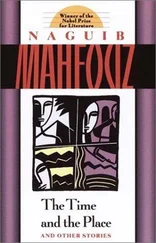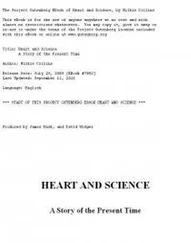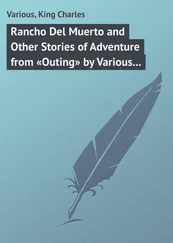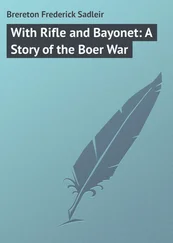When the stew was placed before him—an earthenware bowl full of potatoes and onions floating in thick gravy—the waiter stared over Foxx’s shoulder for a minute and then said, in good but halting English, “Is very nice. Good immaginazione ! Look just like Lorenzo il Magnifico . And his giraffa . Just like the Vecchio painting.”
“Which painting?” Foxx asked, surprised.
“In the Lorenzo room, Vecchio palace. You get your idea from this painting, yes? When Lorenzo marches into Florence with his giraffa ? Very good.”
The next morning Foxx was first in line when the Vecchio opened. It had been Florence’s town hall since it had been built by the Medici family centuries ago and still contained frescos worthy of a dedicated museum. Someone pointed him to Lorenzo the Magnificent’s room. Craning his neck to look upward he saw, painted in a massive fresco high atop the arched ceiling, the very same man, and the very same giraffe, that had marched past him the previous morning.
He walked outside to the broad flagstone expanse of the Piazza della Signoria and consulted his guidebook.
Lorenzo died in 1492.
* * *
He left Florence two days later, after trying and failing to recapture the parade from the same spot on the road. Each time he finished drawing the scene…nothing happened. No parade.
And then it was time to move on.
Foxx had no itinerary other than to travel Italy until his money ran out, sketching picturesque scenes that he would someday paint, God willing, back in London.
In Pisa, he made a sketch of the town’s famous tower with its off-kilter angle. Just as he was putting the last lines on the teetering tower and the nearby cathedral of the Piazza del Duomo the scene changed, revealing something unseen.
He watched as a man, beard flowing over the collar of his knee-length coat, dropped balls and other objects of various sizes from high atop the tower. Another man on the ground—an assistant?—made notes, a quill in one hand and sheaf of papers in the other. This assistant occasionally looked upward as if to yell something to the man on the tower.
Foxx grinned. It had to be.
Galileo!
He had just read about Galileo and his experiments in his guidebook.
He sketched the man into his scene, Galileo leaning out over the tower’s precarious balcony. Foxx drew two round wooden balls the man had dropped, one rather large and the other quite small, just before they hit the ground…together.
On the island of Sicily, Foxx climbed the smoking slopes of Mount Etna. He sketched the city of Catania far below, with its neoclassical buildings and Roman ruins, and the spreading blue waters of the Mediterranean beyond. As he outlined the last spiny cactus in the lower foreground, the prism suddenly darkened, filling with ash and fire. Lava poured in a fiery stream just to the right of where he sat and he almost fell backwards in fear, until he looked away from the camera lucida and saw that the mountainside was quite free from lava, the air around him clear and cool.
Looking back down through the prism into the apocalypse that was Etna erupting, he gasped as he saw a group of men climbing up out of Catania, shovels and poles in hand. Sketching frantically, Foxx drew as the men hacked holes in the sides of the lava’s hardening channel, diverting the flow away from their city…until another group, from a small village towards which the lava was now heading, rushed up and chased off the Catanians. And soon the lava was flowing once more toward Catania.
Foxx knew the city was doomed, even before he reread his guidebook: “…Catania was destroyed in the eruption of 1669, most of its twenty-thousand inhabitants killed…”
A few days later Foxx was sketching the plains of Cannae, the site of the brutal defeat of the Roman army in 216 BC. Harriet had loved teaching her students about it; he suspected it was because the arrogant Roman army got crushed so soundly by a smaller but smarter force.
After he finished penciling in the nearby farmhouses, the peaceful scene suddenly became a nightmare as Hannibal the Carthaginian, outnumbered and far from his African home, outmaneuvered and utterly destroyed the defending Roman army. Foxx frantically sketched the charging Roman cavalry and their heedless destruction at the hands of Hannibal’s well-positioned infantry. He drew severed limbs and broken spears and bloodied helmets, piles of bodies stacked like hillocks. He had never sketched so rapidly in his life, and it was all he could do to not leap aside every time a riderless horse or wounded soldier ran past him as he watched the carnage through the prism.
So it went as Foxx zig-zagged across Italy, the camera lucida showing him the impossible as he sketched his way toward Rome, where he would spend the remainder of his time until the money was gone—just as he and Harriet had planned.
* * *
Rome in mid-December was a city gone dormant: bare trees, few tourists. Foxx walked quiet streets, a rough woolen scarf around his neck to stave off the chill.
Now comfortable with whatever the camera lucida revealed to him, he drew Rome with abandon: Senators taking their baths; merchants selling olives from huge clay pots; dark-skinned Africans and red-haired Gaels being sold in the slave markets, their wrists and ankles in chains; crusaders passing through on their way to the Holy Land; the great dome going up, brick-by-brick, over St. Peters. Whatever period of time he concentrated on as he drew was what came alive through the prism when his sketch was finished.
One cold afternoon he sat sketching the Colosseum. He had just traced the rounded walls with their stacked arches when the camera lucida showed him throngs of Romans, milling about and waiting to see the day’s combat. Some were well-to-do citizens, most were plebians, poor and restless—the mobs Emperor Vespasian had built the Colosseum to mollify.
Foxx was sketching the Romans filing into the arena when a tall gladiator swaggered up out of the stone tunnels from beneath the Colosseum. The giant man walked along the flagstone street while the gathered crowd cheered, at least visibly. Foxx could, of course, hear nothing.
The gladiator’s strutting brought him near where Foxx sat, giving him a close-up view of the polished iron helmet pushed back on the fighter’s broad forehead. Foxx drew in the man’s leather and iron armor, the greaves strapped around his thick calves, the sandals on his feet. He could almost smell the dust and sweat as his pencil flicked and scratched, his memory capturing and filling in the details even after the gladiator disappeared back underneath the Colosseum.
A breeze twirled leaves around the legs of his drawing table as he sketched, and it was then, from the corner of his downcast eyes—out from beyond the perspective of the prism—that Foxx caught sight of the toes of a pair of fine leather boots.
He had grown used to people looking over his shoulder while he drew. Most only stared for a minute before moving on, occasionally commenting on his clever historical embellishments.
But today these boots stayed. Three minutes. Five. Then ten. Foxx was absorbed with the gladiator and soon forgot about the observer.
When he finally put down the pencil, the boots shuffled and a voice said, “I say. Very sorry to disturb, but that’s quite remarkable.”
Foxx looked up.
The man was tall, about his own age. English—his accent conveyed breeding and wealth. He was dressed expensively, an ivory-topped cane in one hand, a well-tailored coat over his shoulders.
“Thank you.”
“Your speculations on the attire of the Roman citizenry, and that gladiator, seem quite specific,” the man said, indicating the sketch. “An educated guess? Perhaps based on the displays in the museums?”
Читать дальше












